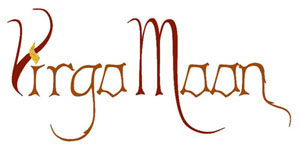

|
www.virgomoon.com |
Selenite Bobcat Necklace |
It is somewhat unusual to find a bobcat fetish, distinguished by its bobbed tail and whiskers. This selenite example has a suggestion of whiskers though you can't see them in my photos. Lena Boone's carvings are usually more "old style" like this one, as contrasted with the highly realistic carvings done today by some artists. Originally it is thought that fetishes were stones which naturally bore a resemblance to the animal, later they were shaped a bit to enhance the resemblance. The bobcat in Zuni tradition is the hunting animal of the south. The Medicine Cards (see below) give the bobcat's close relative the Lynx the attribute "secrets." They say, "Lynx is not the guardian of secrets, but the knower of secrets. The problem lies in getting Lynx to instruct you." They note further that "some medicine people believe that the Sphinx of ancient Egypt was not a Lion but a Lynx." Ted Andrews (Animal Speak) also gives silence and secrets to the bobcat and adds that the sensitive whiskers give the bobcat the ability for a form of psychometry. He makes much of bobcat's solitary nature, its ability to be alone without being lonely. Selenite is hydrated calcium sulfate, a form of gypsum. The word selenite comes from the Greek, meaning "stone of the moon." It was believed that selenite waxed and waned with the moon. Selenite is supposed to activate the seventh (crown) chakra. It is thought to benefit the spinal column and skeletal system. Rubbing the crystal is said to aid in accessing past and future lives. Astrologically it is associated with Taurus. Some sources warn that if left in water for an extended time, the crystal will dissolve, so please don't store your necklace underwater! (That sounds like something I should submit for those collections of absurd warning labels.) I do hope you will give the little bobcat a home and encourage him to share his secrets with you. |
| Home | Add me to mailing list! | Contact Us | About Virgo Moon | Privacy Policy | Site Map |
All designs © Mary Hicklin 2001-2015